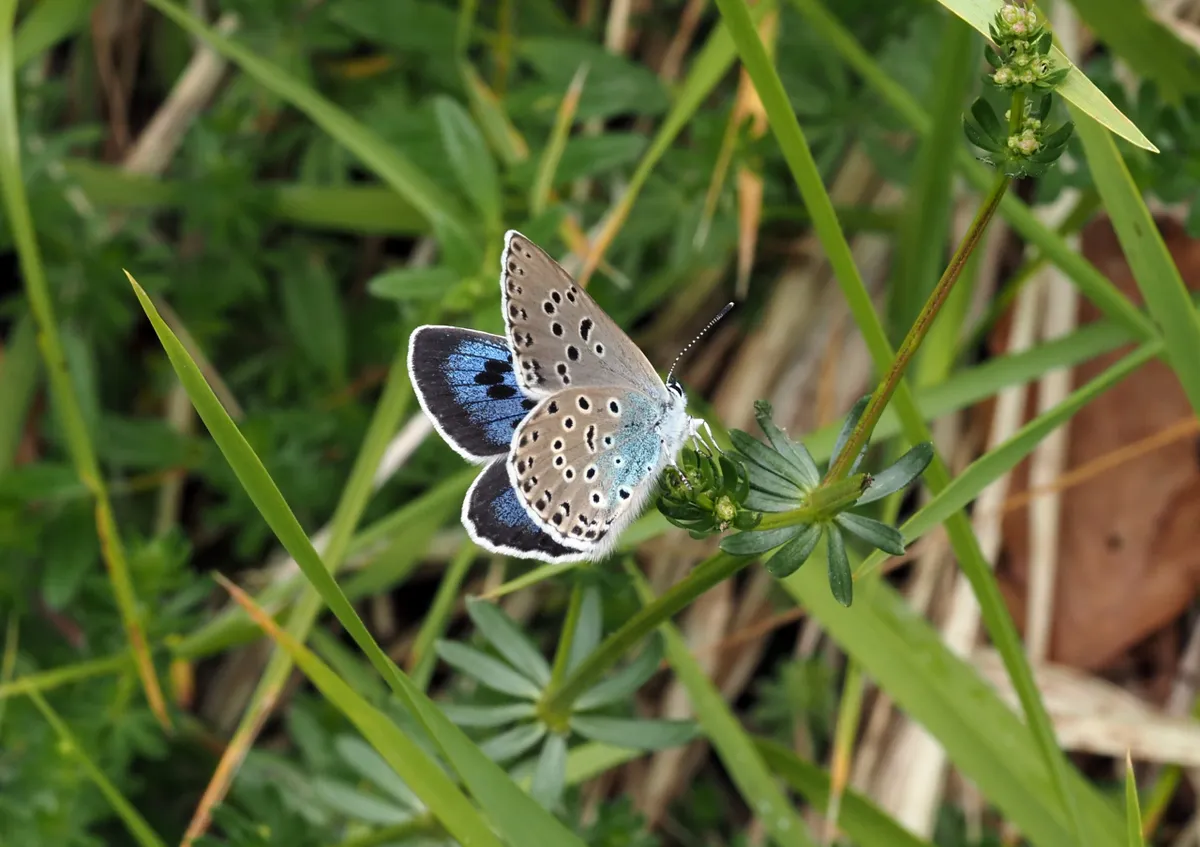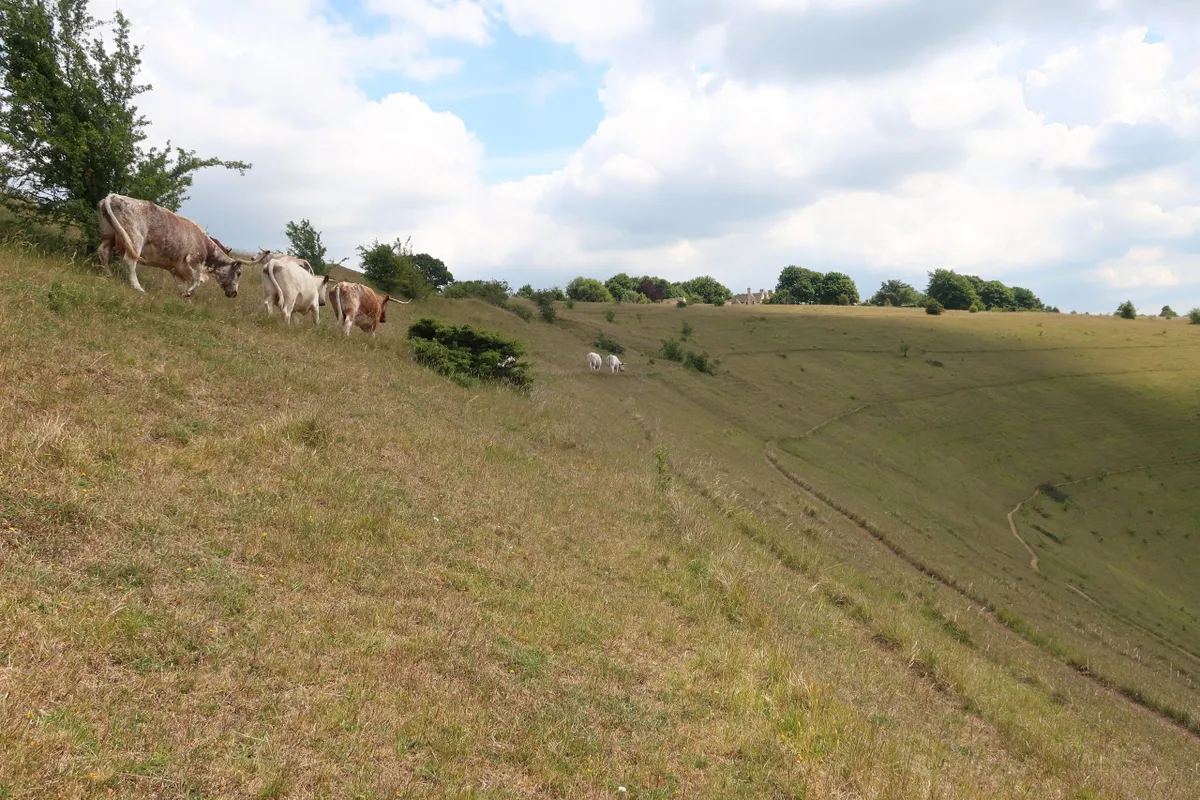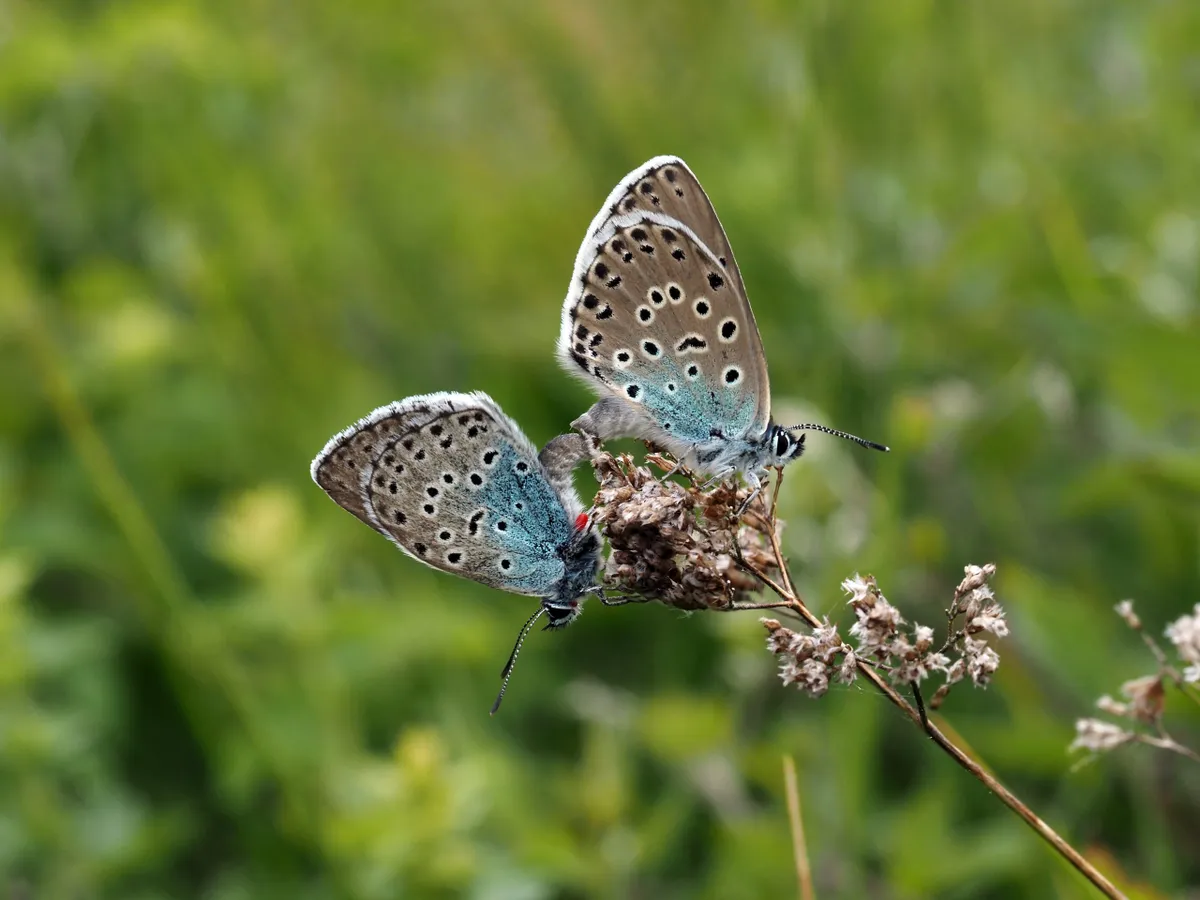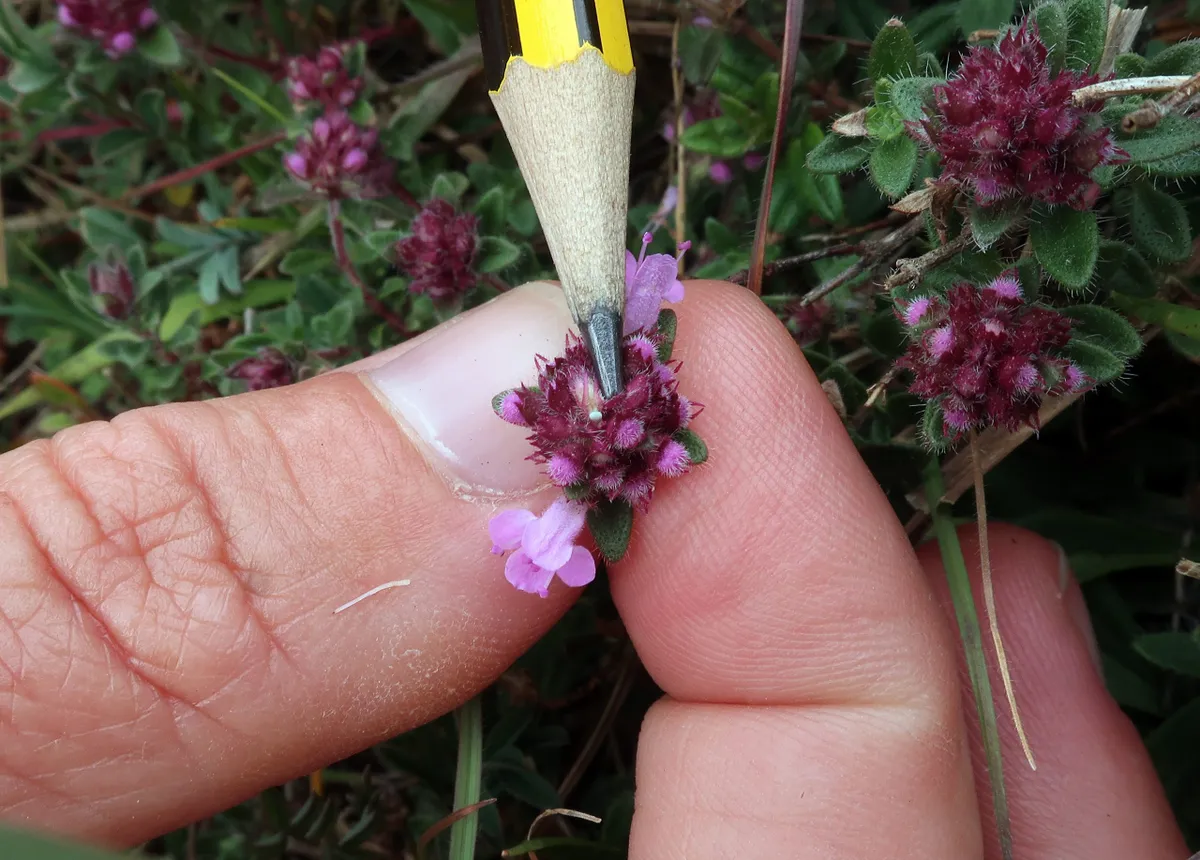With a wingspan of more than 2 inches, the large blue butterfly holds the title of being both the largest, and rarest of all nine British blue butterflies.
This strikingly beautiful insect was declared extinct in Britain in 1979, and its numbers have continued to be in decline elsewhere in the world, making it globally endangered.
In a bid to bring this enigmatic butterfly back from the brink, the project saw the largest ever reintroduction of large blues in the UK, with 1,100 larvae released on the 351 hectare (867 acre) site at Rodborough Common in Gloucestershire last August.
The commons site was prepared for the reintroduction for five years and the caterpillars came from Daneway Banks, a Gloucestershire Wildlife Trust/Royal Entomological Society (RES) site and three other sites in Somerset.
This year, the results of the long-term project have been proven a success, with an estimated 750 butterflies emerging on the site over the summer.

The large-scale collaboration involved National Trust, Butterfly Conservation, Limestone’s Living Legacies Back from the Brink project, Natural England, Royal Entomological Species and Minchinhampton Rodborough Committees of Commoners.

The commons — a Site of Special Scientific Interest and Special Area of Conservation — were chosen for the reintroduction of the large blue butterfly as they support all the elements and habitat required for the insect to flourish. The land supports 14 species of orchid and rare pasqueflower, and is also home to a large number of rare and endangered insects, including the duke of burgundy butterfly and the rock rose pot beetle.
Large blue butterflies were once a common sight on the commons, but due to some of the grassy slopes becoming overgrown — a change that might appear inconsequential at first glance — the butterflies were dealt a blow.

The Myrmica sabuleti ant plays a crucial role in the lifecycle of the butterfly, but their presence at Rodborough Common became more scarce, as Richard Evans, Area Manager for the commons, explains: “The long grass and scrub had caused the soil to cool which made it difficult for the ants to survive. As the ant population dwindled in the late nineteenth century, so did the numbers of large blues.”
In order to ensure that the land on Rodborough Common would be a site on which the butterflies could thrive once more, an innovative grazing regime was put in place, as well as a programme of scrub control.
Small, temporary grazing areas were created using electric fences, to encourage cows (including Luing, Hereford, and Long-horn) to graze slopes that were traditionally less attractive to free roaming cattle.
These methods created the perfect conditions for the Myrmica sabuleti ant, which are vital to the large blue's success. By grazing the cows on the slopes, ideal conditions were created for the ants, allowing sunlight to reach the soil and warming it so the cold-blooded ants can actively scout for food for most of the year.
Wild thyme and marjoram — the main food source for the butterflies and also where they prefer to lay their eggs — also thrived as a result of careful land management.

Richard credits the collaborative work of all the partners involved in the reintroduction project as its success: “Creating the right conditions for this globally endangered butterfly to not only survive but to hopefully thrive has been the culmination of many years work. None of this would’ve been possible without the combined efforts of conservationists and the local graziers.
“One of the greatest legacies of the re-introduction is the power of working together to reverse the decline of threatened species and the benefit the habitat improvements will have for other plants, insects, birds and bats on the commons.”